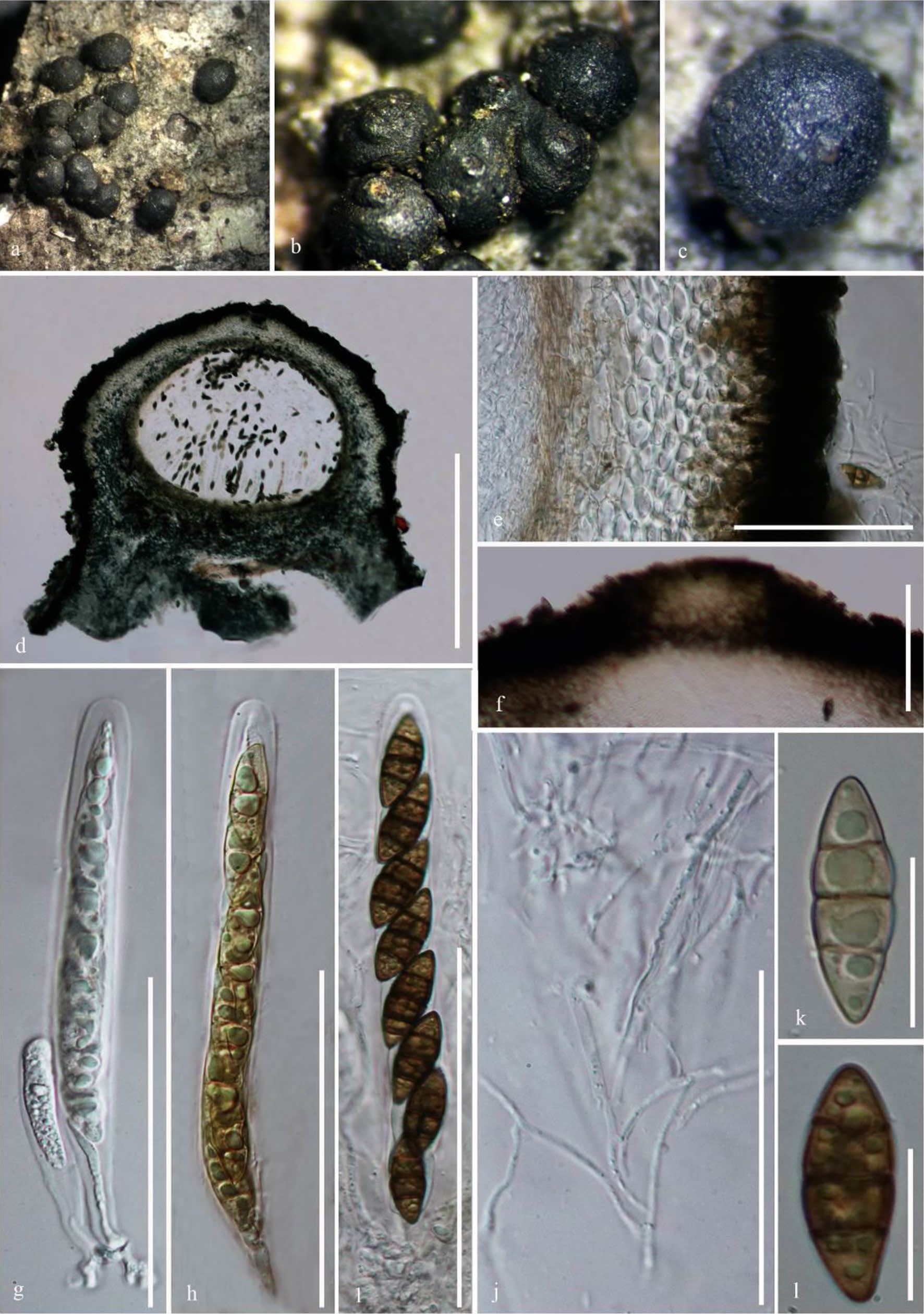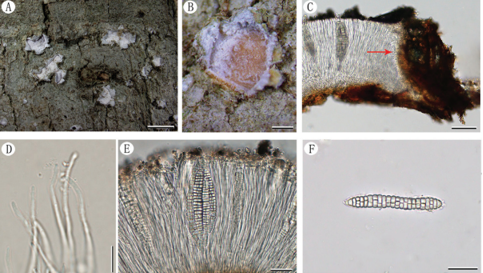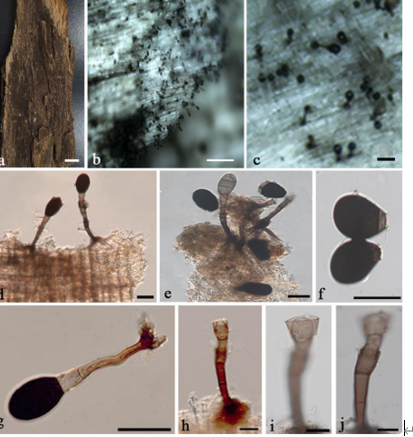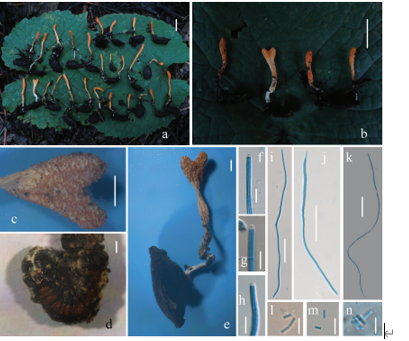Coniothyrium triseptatum Dayarathne, Thyagaraja & K.D. Hyde 2020
Index Fungorum number: IF556425; Facesoffungi number: FoF 06036
Holotype: CHINA, Yunnan Province, Shangri La, 27°55′54.9″ N, 099°34′39.0″ E, alt. 4045 m, on bark of an unidentified host, 12 September 2018, Vinodhini Thyagaraja, (MFLU 19-0758, holotype).
Morphological description
Sexual morph: Ascostromata 0.15–0.25 × 0.1–0.15 mm, 0.1–0.15 mm high, solitary, immersed, fusiform. Ascomata 200–280 × 200–380 μm, 3–4 perithecial, perithecia immersed within the ascostromata, subglobose or globose with a flattened base, dark brown to black, with centrally located short ostiole. Peridium 5.5–8 μm wide, thick- to thin-walled, of unequal thickness, poorly developed at the base and merging with host tissue, composed of several layers of outer brown to inner hyaline, pseudoparenchymatous cells of textura prismatica. Hamathecium of dense, 1–2 μm wide, filamentous, septate, cellular pseudoparaphyses, not constricted at the septum. Asci 100–150 × 6–10 μm ( x = 130 × 8 μm, n = 15), 8-spored, bitunicate, fissitunicate, cylindric-clavate, with broad flat pedicel, apex rounded. Ascospores 15–18 × 4–6 μm ( x = 16× 5 μm, n = 20), overlapping uni-seriate, hyaline, fusiform, with rounded to acute ends, 3-septate, slightly constricted at the middle septum, middle cells are wider than two apical cells, smooth-walled, guttulate. Asexual morph: Undetermined.
Habitat: On bark of an unidentified host.
Distribution: In China.
GenBank Accession: ITS: MK791297; LSU: MK787306; RPB2: MK791298.
Notes: The Paraphaeosphaeria-like sexual morph was firstly recorded in Coniothyrium by Quaedvlieg et al. (2013). Subsequently, Thambugala et al. (2017) introduced the asexual morph C. chiangmaiense Goonas., Thambugala & K.D. Hyde which can be clearly distinguished from C. triseptata by having uniseptate ascospores (Thambugala et al. 2017), while C. triseptatum has 3 septa. Our phylogenetic analyses with concatenated LSU, ITS and RPB2 sequence data confirmed its stability within Coniothyriaceae with high statistical support (0.94 PP) basal to C. sidae (CBS 135108) (Fig. 10). However, the asexual morph of C. sidae possesses (3–)5-septate ascospores and are longer than those of C. triseptata (20–24 μm). Base pair differences of C. sidae and C. triseptatum for ITS are 68 bp out of 452 bp without gaps (15%) and 31 bp out of 300 bp without gaps (10%) for RPB2.
Reference: Hai‑Sheng Yuan1,2· Xu Lu1,2 · Yu‑Cheng Dai3 ·

Coniothyrium triseptatum (MFLU 19-0758, holotype). a–c Ascostromata. d Section of ascomata. e Section through peridium. f Section through neck region. g–i Asci. j Pseudoparaphyses. k–l Ascospores. Scale bars: d = 100 μm, c, g–j =









